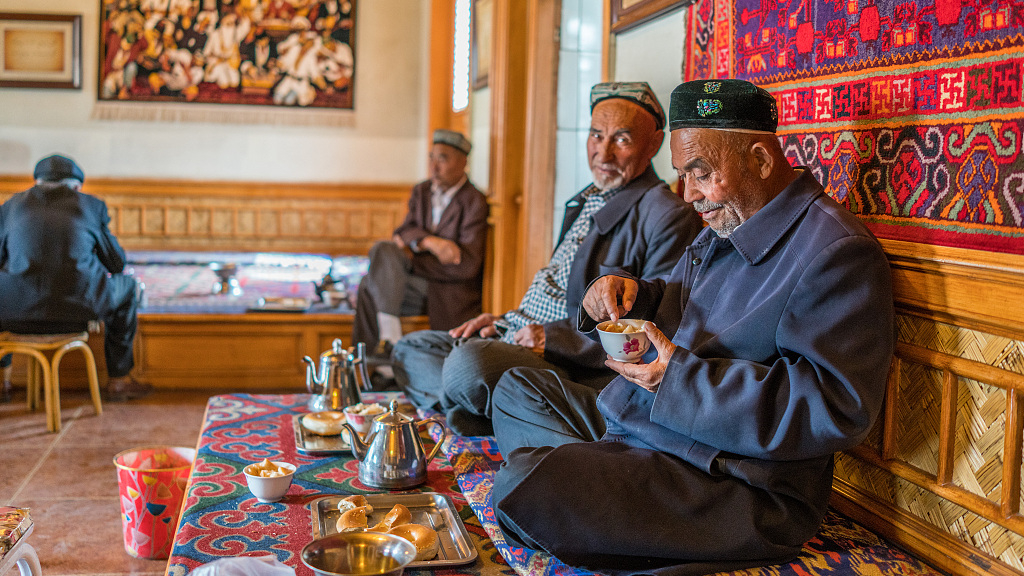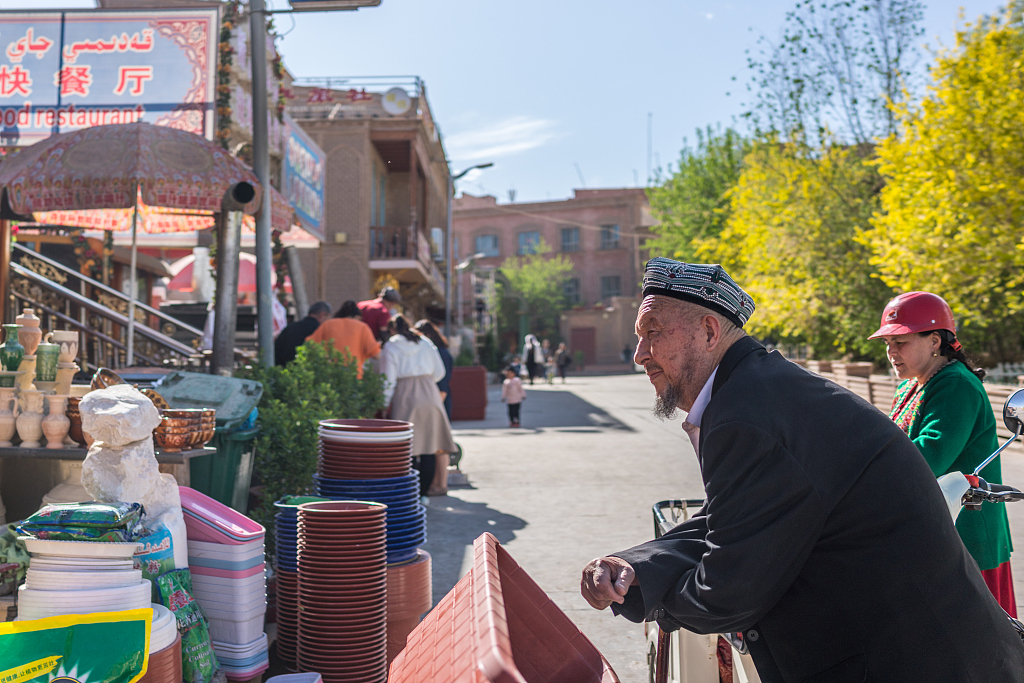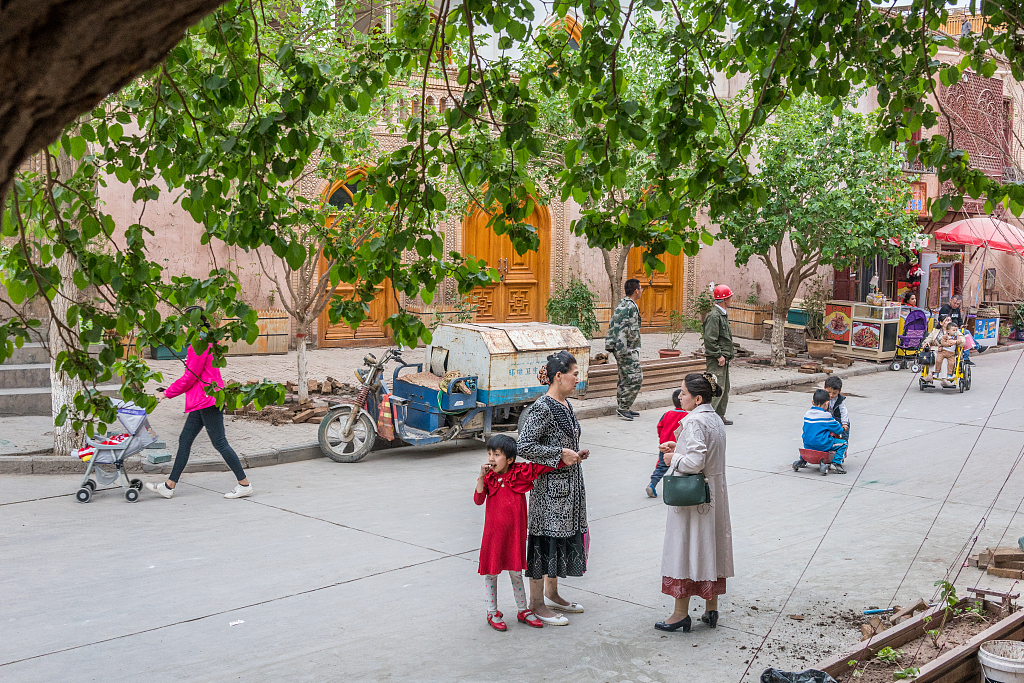

Editor's note: Li Zheng is an associate research fellow at the China Institutes of Contemporary International Relations, Institute of American Studies, and the director of the American Security Center, Institute of American Studies. The article reflects the author's opinions, and not necessarily the views of CGTN.
On July 21, the Chinese government issued a white paper on historical matters concerning the Xinjiang Uygur Autonomous Region in northwest China. The report provides a detailed explanation of some controversial issues in this region, including long-term jurisdiction, ethnic and religious diversity, and regional culture as an integral part of China.
This report is the most comprehensive and detailed document on Xinjiang's history, clarifying the many misunderstandings of Western countries.
At the same time, an open letter about Xinjiang has been widely circulated on Chinese social media. The open letter, which was addressed to U.S. Secretary of State Mike Pompeo, was co-signed by nearly 100 scholars and religious leaders from various ethnic groups in Xinjiang.
Unlike the white paper, this open letter focuses on some of the current controversial and sensitive issues about Xinjiang. It has answered questions with regard to the vocational education and training centers. Besides, the number and intensity of mosques mentioned indicate that the Chinese government has not interfered with the Islamic faith in Xinjiang.
However, Xinjiang is indeed plagued by a number of problems, but most of them, in fact, are related to the influence of external forces.

A resident asks about the price of goods in Kashgar, northwest China's Xinjiang Uygur Autonomous Region, April 12, 2019. /VCG Photo
Historically, there have been many wars and ethnic migrations in the region, which have contributed to the diversity of ethnic structures. The belief in Islam was also affected by the rise of the Arab Empire. And today, Xinjiang is being harassed by extreme thoughts and terrorism.
The Chinese government's series of policies are based on restoring the social order in Xinjiang and restoring peace to the local people. To achieve this goal, one of the core tasks is to eliminate the effects of terrorism and extremism, to prevent these dangerous ideas from continuing to spread widely and to recruit more supporters.
For this purpose, the local governments at all levels have adopted systematic, long-term and people-oriented de-extremization measures to compete with terrorism and extreme ideas.
The Chinese government has also organized foreign diplomatic missions and foreign journalists to visit vocational education and training centers in Xinjiang to dispel any suspicion that may have formed because of measures taken by the government.
Those who have paid the visit have reached a unanimous consensus that what they saw and heard was totally different from what was reported by Western media as Xinjiang is not only beautiful but also quite safe.
However, such an effort has not changed the prejudice of some Western countries.
Earlier this week, the U.S. Secretary of State Pompeo once again made some extremely negative remarks on the Xinjiang issue. These false statements include deteriorating human rights in Xinjiang and interference with local religious freedom.

Kashgar, northwest China's Xinjiang Uygur Autonomous Region, April 8, 2019. /VCG Photo
Pompeo's remarks, however, were directly refuted by the Saudi government as the Saudi ambassador to the United Nations said that no other country in the world is more worried about the situation of Muslims than Saudi Arabia, and Saudi Arabia supports China's development policy in Xinjiang because these policies have lifted many people out of poverty.
Western governments and the media's prejudice over Xinjiang, on one hand, are partly derived from forces that do not want peace and stability in Xinjiang, such as separatist organizations or supporters of extremism who dream of gaining political power to rule local people or keeping people uneducated, lack of professional skills and an unstable income. On the other hand, they may be quite reluctant to see a stable and peaceful China rising from the East.
Based on their own interests, two groups combined a Western history and rumors to create a forged narrative about Xinjiang, in which the Chinese government is a liar and has hidden a huge secret.
After the facts about Xinjiang were disclosed, the narrative is meaningless as there is nothing to hide at all. In contrast, the systematic smearing of China deliberately drawn up by a small number of people in order to provoke the turmoil in Xinjiang is a fact that has not been fully disclosed yet.
(If you want to contribute and have specific expertise, please contact us at opinions@cgtn.com.)

Copyright © 2018 CGTN. Beijing ICP prepared NO.16065310-3
Copyright © 2018 CGTN. Beijing ICP prepared NO.16065310-3